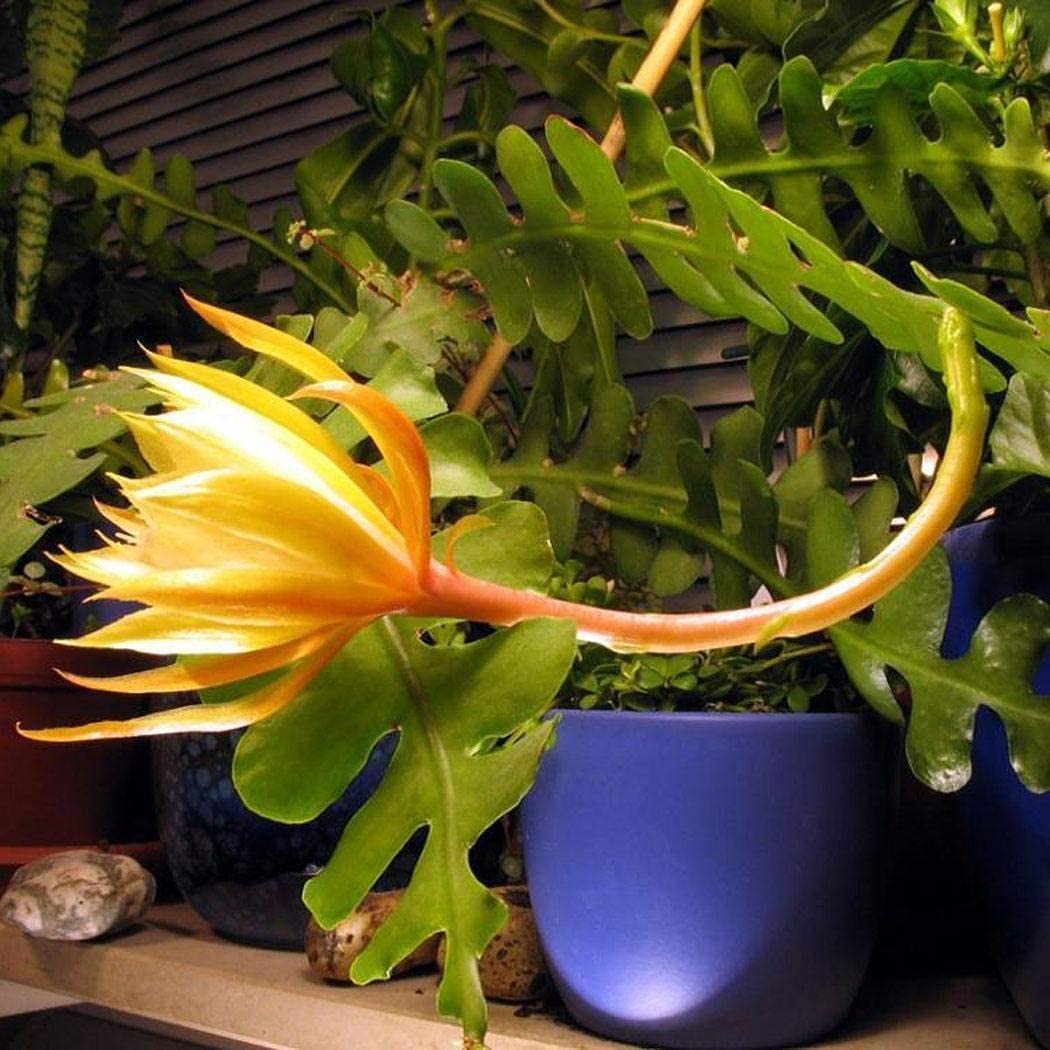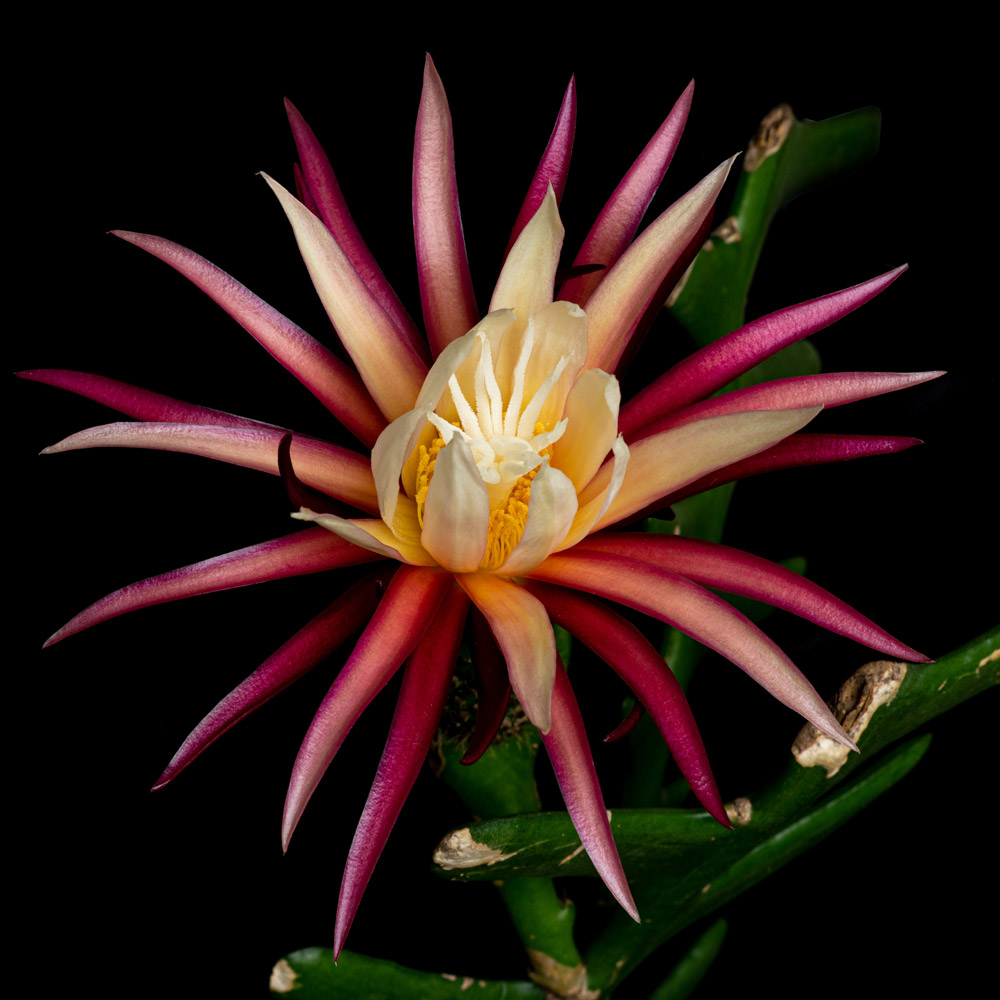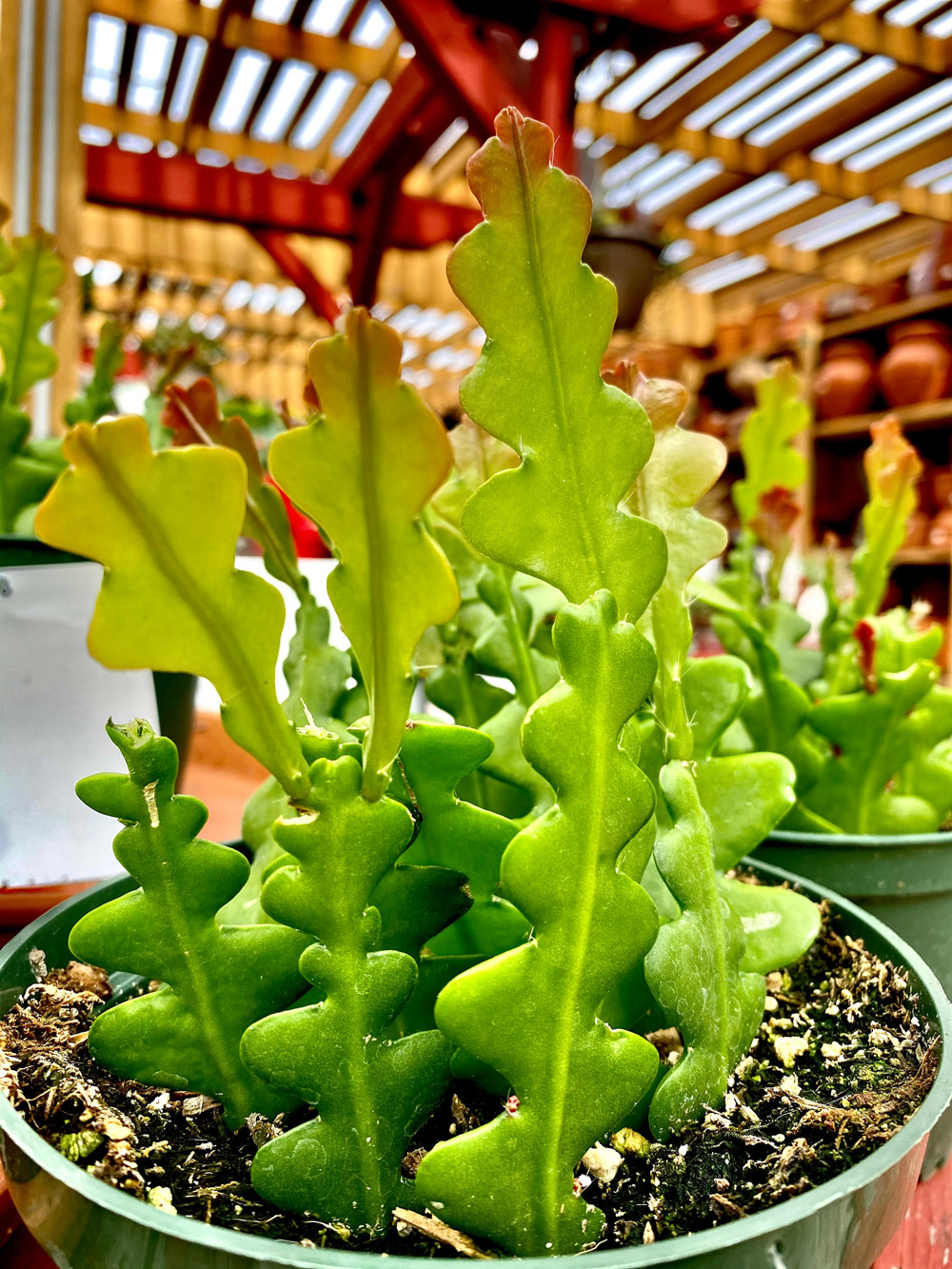Fishbone Cactus Care – How To Grow And Care For Zig Zag Cactus
In the world of horticulture, not two cacti are the same. Even if they belong to the same species. This simple yet puzzling agricultural fact applies to the fishbone cactus more than any other cactus.
When you grow the fishbone cactus you’ll soon notice that it has a personality and character. It’s not just the aerial roots which give it a unique look, this is a houseplant that fits right into any setting and brings joy and light to its surroundings.
Fishbone cactus is the kind of plant that you can watch for hours without getting bored. The zig zag leaves give it an appeal that few houseplants can match. So how do you grow and care for this dainty, yet hardy, plant?
What is Fishbone Cactus?
Fishbone cactus (Epiphyllum anguliger) is native to the tropics of Central America. It’s one of 19 species and goes by many other names. These include Queen of the Night, Moon Cactus, Rick-Rack Orchid Cactus, and Rick Rack Cactus among others. Its natural habitat is on the floors of evergreen oak forests.
The leaves of the fishbone cactus are by far its most distinguishing feature. The zig zag like shapes along with the deep green colors make it a sight for sore eyes. But that’s not all the visual delights this cactus has in store for you. Come summer, the mature plant produces some little blooms that come in different colors. The flowers could be red, pink, white, or yellow.
Over the years, many cultivars came to be popular among cactus lovers. In the case of fishbone cactus, there are currently thousands of hybrids which explains the different colors of the blooms. Depending on the cultivar you grow, the flowers might be fragrant especially in the summer evening. How long the flowers last also depends on their hybrid. They range from a few days to a few weeks.
How to Grow Fishbone Cactus
The best way to get your hands on a fishbone cactus is to buy it at the local nursery. But if you already have a mature cactus and want to grow a new one, these easy steps will guide you.
- Pick the right leaf to cut. It should be healthy looking with no damage, scars, or pests. Also, make sure the leaf has aerial roots attached to it. Cut it at the end where it meets the stem. You can still plant a cutting without roots attached although it will take longer to grow.
- Use a medium-size pot with draining holes at the bottom.
- Fill the pot with a potting mix. The soil needs to be well-drained. Add in organic compost and mulch for water retention and aeration.
- Leave the leaf on top of the soil (don’t plant it yet) for a week so that the cutting will callous over. This dry layer protects the leaf against rotting when you plant it in wet soil.
- Move the pot to a sunny spot where the temperature is between 60 and 75 degrees F.
- Dig a hole in the soil and place about one third of the leaf into the hole.
- Fill the hole with soil and leave it loose. Don’t pack the soil around the leaf.
- Water the pot until water comes out of the drainage holes at the bottom.
- Don’t overwater the soil. You should wait for the top three inches to go dry before you water it again.
- After a few weeks, the leaf will develop roots and leaves will sprout out of it.
Zig Zag Cactus Care
And that’s about it. That’s all the work you have to do to grow a lovely fishbone cactus. It doesn’t get any easier than that. As for caring for the cactus, this hardy plant can handle itself well and doesn’t ask for much of your time or effort.
[amazon box=”B08LFZHKHX”]
Temperature
As a tropical plant, the fishbone cactus enjoys hot temperatures. Ideally, you should keep the temperature anywhere between 50 to 75 degrees for growing or fully grown plants. If the weather gets cold, you might want to take it indoors. In the summer avoid keeping it in sunny places since it’s not fond of the full sun. Partial shade will help it grow and will not impact its delicate flowers. Generally speaking, you shouldn’t leave it for more than one hour in the direct sun.
Light for the ric rac cactus
While the fishbone cactus isn’t fond of the sun, that doesn’t mean it’s a shade plant. It still needs plenty of light. One thing about these cacti, they don’t tend to flower indoors. This is one reason you’d want to take it outside when the weather is warm enough. This applies to this species as well as the cultivars. Starting from the late summer and early fall, you should place the cactus in the sun for one hour every day before moving it to the shade. Soon, flowers will grow and open up.
Watering the ric rac cactus
If you have grown any species of cactus before, you probably have heard that they don’t require much water. Well, that’s not the case in our fishbone cactus. During the dog days of summer, the cactus needs plenty of water just like any other flowering plant. Avoid overwatering though, since its roots cannot handle waterlogging and tend to rot. Hold off the water after the flowering for a couple of weeks. Make sure the topsoil is dry before you irrigate the pot again.
Fertilizer
The fishbone cactus can survive in just about any soil you grow it in. It won’t need plant food supplements, although a well-balanced, all-purpose fertilizer will come in handy just before the flowering season in the summer. After the flowering is over, don’t add fertilizer. As for the dose, you don’t need more than half a tablespoon of fertilizer for a gallon of water. This should be enough for a whole bunch of fishbone cactus pots.
Aerial Roots
A healthy fishbone cactus plant will develop roots right out of the zig zag leaves. Each leaf will have as many as seven aerial roots coming out of the top side. These roots which look like tendrils help the plant latch on to other trees and plants in its vicinity for support. The roots also suck moisture and nutrients just like underground roots. If you see more aerial roots on the plant than usual that could mean the cactus is dehydrated.
Pruning
While the fishbone cactus is not known for its fast growth rates or taking up more space than it should, every now and then you might need to prune it. It’s mostly for ornamental and decorative purposes. Remove any yellowing leaves. Check that no leaves are damaged or broken. This encourages the plant to replace the broken leaves and maintain its appealing looks.
Repotting
As with many plants that last more than a year, your fishbone cactus needs to be repotted. It will usually outgrow its pot once every three years. It’s the root system which needs more space, more than the leaves or stems themselves. Find a larger pot, fill it with potting mix and compost, then take the fishbone cactus out of its current pot. Check the root system and make sure the roots are healthy. Remove any rotten or entangled roots, then lower the root ball into the new pot. Cover with soil and water immediately.
Disease and Pests
To say that this hardy fishbone cactus attracts a bunch of pests and diseases is an understatement. From the tender aerial roots to the sweet-smelling flowers and succulent leaves, this is a plant that has a lot to offer to bugs. Some of these pests are aphids, scale, spider mites, mealybugs, and vine weevils.
Since you will be having this houseplant more indoors than outdoors, it’s important to be on the lookout for the first symptoms of an infestation. Don’t wait until the bugs multiply and cover the whole plant. By then it might be too late to save your fishbone cactus. Pick the bugs by hand and dispose of them safely. You can either drown them in a bucket of water or use neem oil.
As for disease, there are plenty of them. The most common disease your fishbone cactus will have is root rot. The root rot is often caused by waterlogging. The symptoms include yellowing leaves that look soft and squishy. Stop watering the plant and wait for it to get healthy again. If that doesn’t happen, then repotting it will help.
Other diseases include leaf rot, botrytis petal blight, leaf-spot disease, and powdery mildew. Most of these are caused by fungal infections, bacteria, and sometimes viruses. While you can still salvage the plant and help it grow again by repotting and removing the infected leaves. In some cases as with the botrytis petal blight and leaf-spot disease, you won’t be able to do much but get rid of the whole pot. Make sure you don’t infect the rest of the plants near the plant since it uses its aerial roots to reach out to other plants which would spread the disease.


